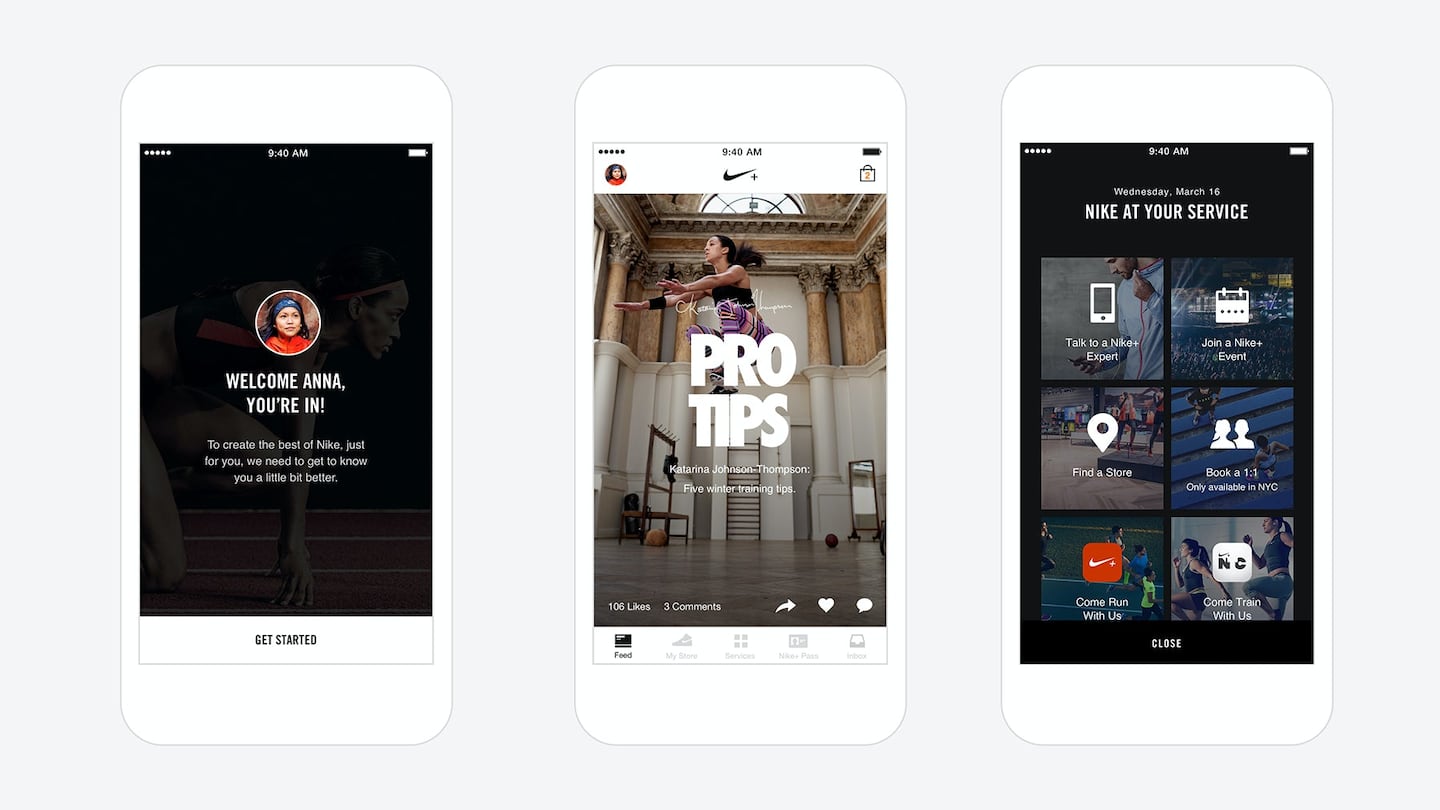
The Business of Fashion
Agenda-setting intelligence, analysis and advice for the global fashion community.

Agenda-setting intelligence, analysis and advice for the global fashion community.

NEW YORK, United States — On Wednesday, at a grand presentation produced by Bureau Betak and staged at Skylight at Moynihan Station, an event space in New York's Midtown, sportswear giant Nike introduced what it characterised as its most ambitious line-up of new products since the launch of Nike Flyknit in 2012. The day's headline-maker was the HyperAdapt 1.0, a shoe that uses "adaptive-lacing" technology to tighten and loosen shoelaces with the touch of a tiny button. "The technology has actually caught up to our ambitions," said Nike vice president of global design John Hoke III. "We know consumers want a more personal experience. This shoe is an inflection point. It's a pivot into the most adaptable shoe you could absolutely want."
Indeed, staging personal experiences — which may even transform participants — is an important pillar of Nike's strategy in a world where consumers increasingly value self-actualization over physical stuff. In response, production innovation in consumer markets is evolving along what Joseph Pine, a business strategist and co-author of The Experience Economy, has described as a five-staged "progression of economic value," from commodities to goods to services to experiences to personal transformations. "With every level, consumers gain a new aspiration," said Pine in a January 2016 interview with BoF. "Whether that means becoming more fit, from the physical, emotional or spiritual [experience], increasingly it's about how everything we buy affects us in some way."
"We're in an era of personalised sport," said Nike chief executive Mark Parker to the audience at the event. (Parker led the company to $30.6 billion in revenue in the 2015 fiscal year, a 10 percent increase from 2014.) Along with the HyperAdapt 1.0, the company presented another new shoe with a "Vapormax Air cushion" in place of a traditional rubber sole. But, critically, Nike also unveiled a new Nike+ app, which offers users access to a Nike store tailored to their personal preferences; allows them to book one-on-one appointments with sales assistants at nearby stores; and encourages them to sign up for local running and training classes. The app also pulls in personal fitness data from Nike's standalone training apps — including Nike+ Run Club and Nike+ Training Club — and offers perks for frequent users, including early access to new gear. More than a product, the app is a personal service that holds the promise of transforming a user's life.
“We’ll have data based on your activity, but we’re also inviting you to tell us what you want,” Nikki Neuburger, vice president of global brand Nike+, told BoF. “That’s the personalisation component that I think is really interesting. It takes it away from data and dashboards and into services and solutions really tailored to you.”
ADVERTISEMENT
“We believe that the data that consumers share with us should be to help serve them,” added Trevor Edwards, president of the Nike brand. “Sometimes you get what I will call pattern data — such as, people who have a workout partner tend to stick with a workout programme longer — so when we’re creating functionality or experiences, we know that those things are actually going to change your ability to stick with a programme.”
At the event, guests were guided through a series of product demonstrations, presented by a blend of Nike executives and star athletes. Then, later in the day, the audience headed downtown to Skylight Clarkson Square, where groups were able to sample from a menu of Nike experiences: some worked out in Nike gear, while others were treated to a design session using Nike ID, the company’s digital customisation platform, led by the legendary Nike shoe designer Tinker Hatfield. In some ways, the activities reflected some of the consumer-facing experiences Nike stages on a regular basis, from weekly running clubs organised by local retail stores to major races, where guests, who pay an entrance fee, are encouraged to participate in complimentary workout classes and socialise before and after the event. “If you go to a lot of our stores, they’ll go for a run with you,” said Edwards. “To me, that’s always been inspiring.”
But while Nike's consumer experiences still largely serve as marketing — and, in some cases, a direct conduit to the store — driving sales of its shoes and apparel, the question becomes: Will these experiences one day account for a more significant percentage of the company's overall revenue?
Successful social media acquisitions require keeping both talent and technology in place. Neither is likely to happen in a deal for the Chinese app, writes Dave Lee.
TikTok’s first time sponsoring the glitzy event comes just as the US effectively deemed the company a national security threat under its current ownership, raising complications for Condé Nast and the gala’s other organisers.
BoF Careers provides essential sector insights for fashion's technology and e-commerce professionals this month, to help you decode fashion’s commercial and creative landscape.
The algorithms TikTok relies on for its operations are deemed core to ByteDance overall operations, which would make a sale of the app with algorithms highly unlikely.